-
EXECUTIVE SUMMARY
-
MARKET INTRODUCTION
-
Definition
-
Scope of the Study
- Research Objective
- Assumptions
- Limitations
-
RESEARCH METHODOLOGY
-
Overview
-
Data Mining
-
Secondary Research
-
Primary Research
- Primary Interviews
- Breakdown of Primary Respondents
-
and Information Gathering Process
-
Forecasting Model
-
Market Size Estimation
- Bottom-Up Approach
- Top-Down Approach
-
Data Triangulation
-
Validation
-
MARKET DYNAMICS
-
Overview
-
Drivers
-
Restraints
-
Opportunities
-
MARKET FACTOR ANALYSIS
-
Value Chain Analysis
-
Porter’s Five Forces Analysis
- Bargaining Power
- Threat of New Entrants
- Threat of Substitutes
- Intensity of Rivalry
-
of Suppliers
-
Bargaining Power of Buyers
-
COVID-19 Impact Analysis
- Market Impact Analysis
- Regional Impact
- Opportunity and
-
Threat Analysis
-
GLOBAL BENCH HYDRAULIC PRESS MARKET, BY TYPE
-
Overview
-
H-Type
-
C-Type
-
GLOBAL BENCH HYDRAULIC PRESS MARKET, BY APPLICATION
-
Overview
-
Laboratory
-
Production Workshop
-
Machining Plant
-
Others
-
GLOBAL BENCH HYDRAULIC
-
PRESS MARKET, BY REGION
-
Overview
-
North America
- US
- Italy
- Spain
- Rest of Europe
-
Canada
-
Europe
-
Germany
-
France
-
UK
-
Asia-Pacific
- China
- India
- Japan
- South Korea
- Australia
- Rest of Asia-Pacific
-
Rest of the World
- Middle East
- Africa
- Latin America
-
COMPETITIVE LANDSCAPE
-
Overview
-
Competitive Analysis
-
Market Share Analysis
-
Major Growth Strategy
-
in the Global Bench Hydraulic Press Market,
-
Competitive Benchmarking
-
Leading Players in Terms of Number of Developments
-
in the Global Bench Hydraulic Press Market,
-
Key developments and Growth Strategies
- New Product Launch/Service
- Joint Ventures
-
Deployment
-
Merger & Acquisitions
-
Major Players Financial Matrix
- Sales & Operating Income, 2022
- Major Players
-
R&D Expenditure. 2022
-
COMPANY PROFILES
-
Enerpac
- Company Overview
- Financial Overview
- Products Offered
- Key Developments
- SWOT Analysis
- Key Strategies
-
Bucher Industries
- Company Overview
- Financial Overview
- Products Offered
- Key Developments
- SWOT Analysis
- Key Strategies
-
Dayang Hydraulic Press
- Company Overview
- Financial Overview
- Products Offered
- Key Developments
- SWOT Analysis
- Key Strategies
-
Parker Hannifin
- Company Overview
- Financial Overview
- Products Offered
- Key Developments
- SWOT Analysis
- Key Strategies
-
Greenerd Press & Machine
- Company Overview
- Financial Overview
- Products Offered
- Key Developments
- SWOT Analysis
- Key Strategies
-
Buffalo Hydraulic
- Company Overview
- Financial Overview
- Products Offered
- Key Developments
- SWOT Analysis
- Key Strategies
-
Heritage Machinery
- Company Overview
- Financial Overview
- Products Offered
- Key Developments
- SWOT Analysis
- Key Strategies
-
Beta Tools
- Company Overview
- Financial Overview
- Products Offered
- Key Developments
- SWOT Analysis
- Key Strategies
-
RK Machinery
- Company Overview
- Financial Overview
- Products Offered
- Key Developments
- SWOT Analysis
- Key Strategies
-
Bosch
- Company Overview
- Financial Overview
- Products Offered
- Key Developments
- SWOT Analysis
- Key Strategies
-
APPENDIX
-
References
-
Related Reports
-
LIST
-
OF TABLES
-
TABLE
-
GLOBAL BENCH HYDRAULIC PRESS MARKET, SYNOPSIS, 2018-2032
-
GLOBAL BENCH HYDRAULIC PRESS MARKET, ESTIMATES
-
& FORECAST, 2018-2032 (USD BILLION)
-
GLOBAL BENCH HYDRAULIC PRESS MARKET, BY TYPE, 2018-2032
-
(USD BILLION)
-
TABLE
-
GLOBAL BENCH HYDRAULIC PRESS MARKET, BY APPLICATION, 2018-2032 (USD BILLION)
-
NORTH AMERICA:
-
BENCH HYDRAULIC PRESS MARKET, BY TYPE, 2018-2032 (USD BILLION)
-
NORTH AMERICA: BENCH
-
HYDRAULIC PRESS MARKET, BY APPLICATION, 2018-2032 (USD BILLION)
-
US: BENCH HYDRAULIC PRESS
-
MARKET, BY TYPE, 2018-2032 (USD BILLION)
-
US: BENCH HYDRAULIC PRESS MARKET, BY APPLICATION,
-
CANADA: BENCH HYDRAULIC PRESS MARKET, BY TYPE, 2018-2032 (USD
-
BILLION)
-
TABLE
-
CANADA: BENCH HYDRAULIC PRESS MARKET, BY APPLICATION, 2018-2032 (USD BILLION)
-
EUROPE: BENCH
-
HYDRAULIC PRESS MARKET, BY TYPE, 2018-2032 (USD BILLION)
-
EUROPE: BENCH HYDRAULIC PRESS MARKET, BY
-
APPLICATION, 2018-2032 (USD BILLION)
-
GERMANY: BENCH HYDRAULIC PRESS MARKET, BY TYPE,
-
GERMANY: BENCH HYDRAULIC PRESS MARKET, BY APPLICATION, 2018-2032
-
(USD BILLION)
-
TABLE
-
FRANCE: BENCH HYDRAULIC PRESS MARKET, BY TYPE, 2018-2032 (USD BILLION)
-
FRANCE: BENCH
-
HYDRAULIC PRESS MARKET, BY APPLICATION, 2018-2032 (USD BILLION)
-
ITALY: BENCH HYDRAULIC
-
PRESS MARKET, BY TYPE, 2018-2032 (USD BILLION)
-
ITALY: BENCH HYDRAULIC PRESS MARKET, BY APPLICATION,
-
SPAIN: BENCH HYDRAULIC PRESS MARKET, BY TYPE, 2018-2032 (USD
-
BILLION)
-
TABLE
-
SPAIN: BENCH HYDRAULIC PRESS MARKET, BY APPLICATION, 2018-2032 (USD BILLION)
-
UK: BENCH HYDRAULIC
-
PRESS MARKET, BY TYPE, 2018-2032 (USD BILLION)
-
UK: BENCH HYDRAULIC PRESS MARKET, BY APPLICATION,
-
REST OF EUROPE: BENCH HYDRAULIC PRESS MARKET, BY TYPE, 2018-2032
-
(USD BILLION)
-
TABLE
-
REST OF EUROPE: BENCH HYDRAULIC PRESS MARKET, BY APPLICATION, 2018-2032 (USD
-
BILLION)
-
TABLE
-
ASIA-PACIFIC: BENCH HYDRAULIC PRESS MARKET, BY TYPE, 2018-2032 (USD BILLION)
-
ASIA-PACIFIC:
-
BENCH HYDRAULIC PRESS MARKET, BY APPLICATION, 2018-2032 (USD BILLION)
-
JAPAN: BENCH
-
HYDRAULIC PRESS MARKET, BY TYPE, 2018-2032 (USD BILLION)
-
JAPAN: BENCH HYDRAULIC PRESS MARKET, BY
-
APPLICATION, 2018-2032 (USD BILLION)
-
CHINA: BENCH HYDRAULIC PRESS MARKET, BY TYPE, 2018-2032
-
(USD BILLION)
-
TABLE
-
CHINA: BENCH HYDRAULIC PRESS MARKET, BY APPLICATION, 2018-2032 (USD BILLION)
-
INDIA:
-
BENCH HYDRAULIC PRESS MARKET, BY TYPE, 2018-2032 (USD BILLION)
-
INDIA: BENCH HYDRAULIC
-
PRESS MARKET, BY APPLICATION, 2018-2032 (USD BILLION)
-
AUSTRALIA: BENCH HYDRAULIC PRESS MARKET,
-
BY TYPE, 2018-2032 (USD BILLION)
-
AUSTRALIA: BENCH HYDRAULIC PRESS MARKET, BY APPLICATION, 2018-2032
-
(USD BILLION)
-
TABLE
-
SOUTH KOREA: BENCH HYDRAULIC PRESS MARKET, BY TYPE, 2018-2032 (USD BILLION)
-
SOUTH KOREA:
-
BENCH HYDRAULIC PRESS MARKET, BY APPLICATION, 2018-2032 (USD BILLION)
-
REST OF ASIA-PACIFIC:
-
BENCH HYDRAULIC PRESS MARKET, BY TYPE, 2018-2032 (USD BILLION)
-
REST OF ASIA-PACIFIC:
-
BENCH HYDRAULIC PRESS MARKET, BY APPLICATION, 2018-2032 (USD BILLION)
-
REST OF THE
-
WORLD: BENCH HYDRAULIC PRESS MARKET, BY TYPE, 2018-2032 (USD BILLION)
-
REST OF THE
-
WORLD: BENCH HYDRAULIC PRESS MARKET, BY APPLICATION, 2018-2032 (USD BILLION)
-
MIDDLE EAST:
-
BENCH HYDRAULIC PRESS MARKET, BY TYPE, 2018-2032 (USD BILLION)
-
MIDDLE EAST: BENCH HYDRAULIC
-
PRESS MARKET, BY APPLICATION, 2018-2032 (USD BILLION)
-
AFRICA: BENCH HYDRAULIC PRESS MARKET, BY
-
TYPE, 2018-2032 (USD BILLION)
-
AFRICA: BENCH HYDRAULIC PRESS MARKET, BY APPLICATION, 2018-2032
-
(USD BILLION)
-
TABLE
-
LATIN AMERICA: BENCH HYDRAULIC PRESS MARKET, BY TYPE, 2018-2032 (USD BILLION)
-
LATIN AMERICA:
-
BENCH HYDRAULIC PRESS MARKET, BY APPLICATION, 2018-2032 (USD BILLION)
-
LIST OF FIGURES
-
RESEARCH PROCESS
-
MARKET STRUCTURE
-
FOR THE GLOBAL BENCH HYDRAULIC PRESS MARKET
-
MARKET DYNAMICS FOR THE GLOBAL BENCH HYDRAULIC
-
PRESS MARKET
-
FIGURE
-
GLOBAL BENCH HYDRAULIC PRESS MARKET, SHARE (%), BY TYPE, 2022
-
GLOBAL BENCH HYDRAULIC
-
PRESS MARKET, SHARE (%), BY APPLICATION, 2022
-
GLOBAL BENCH HYDRAULIC PRESS MARKET, SHARE
-
(%), BY REGION, 2022
-
FIGURE
-
NORTH AMERICA: BENCH HYDRAULIC PRESS MARKET, SHARE (%), BY REGION, 2022
-
EUROPE: BENCH
-
HYDRAULIC PRESS MARKET, SHARE (%), BY REGION, 2022
-
ASIA-PACIFIC: BENCH HYDRAULIC PRESS MARKET,
-
SHARE (%), BY REGION, 2022
-
REST OF THE WORLD: BENCH HYDRAULIC PRESS MARKET, SHARE (%),
-
BY REGION, 2022
-
FIGURE
-
GLOBAL BENCH HYDRAULIC PRESS MARKET: COMPANY SHARE ANALYSIS, 2022 (%)
-
ENERPAC: FINANCIAL
-
OVERVIEW SNAPSHOT
-
FIGURE
-
ENERPAC: SWOT ANALYSIS
-
BUCHER INDUSTRIES: FINANCIAL OVERVIEW SNAPSHOT
-
BUCHER INDUSTRIES:
-
SWOT ANALYSIS
-
FIGURE
-
DAYANG HYDRAULIC PRESS: FINANCIAL OVERVIEW SNAPSHOT
-
DAYANG HYDRAULIC PRESS: SWOT ANALYSIS
-
PARKER HANNIFIN:
-
FINANCIAL OVERVIEW SNAPSHOT
-
PARKER HANNIFIN: SWOT ANALYSIS
-
GREENERD PRESS & MACHINE: FINANCIAL
-
OVERVIEW SNAPSHOT
-
FIGURE
-
GREENERD PRESS & MACHINE: SWOT ANALYSIS
-
BUFFALO HYDRAULIC: FINANCIAL OVERVIEW SNAPSHOT
-
BUFFALO HYDRAULIC:
-
SWOT ANALYSIS
-
FIGURE
-
HERITAGE MACHINERY: FINANCIAL OVERVIEW SNAPSHOT
-
HERITAGE MACHINERY: SWOT ANALYSIS
-
BETA TOOLS:
-
FINANCIAL OVERVIEW SNAPSHOT
-
BETA TOOLS: SWOT ANALYSIS
-
RK MACHINERY: FINANCIAL OVERVIEW SNAPSHOT
-
RK MACHINERY:
-
SWOT ANALYSIS
-
FIGURE
-
BOSCH: FINANCIAL OVERVIEW SNAPSHOT
-
BOSCH: SWOT ANALYSIS

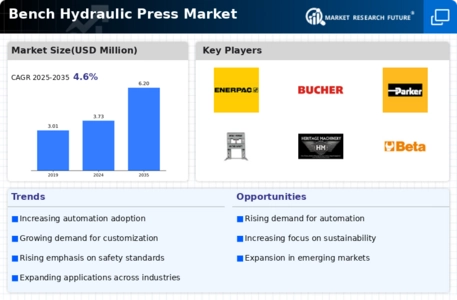
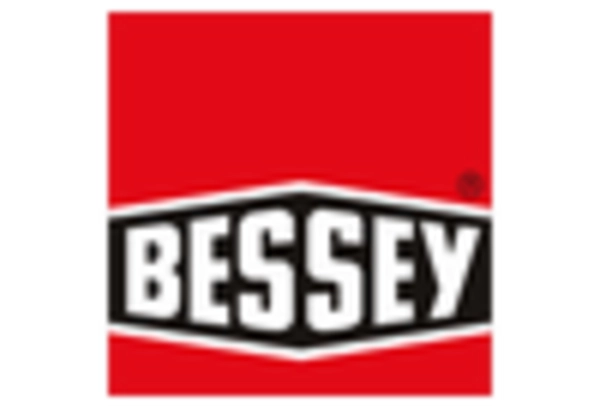
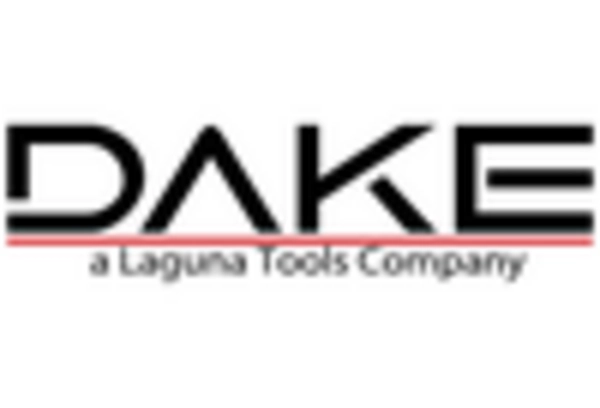
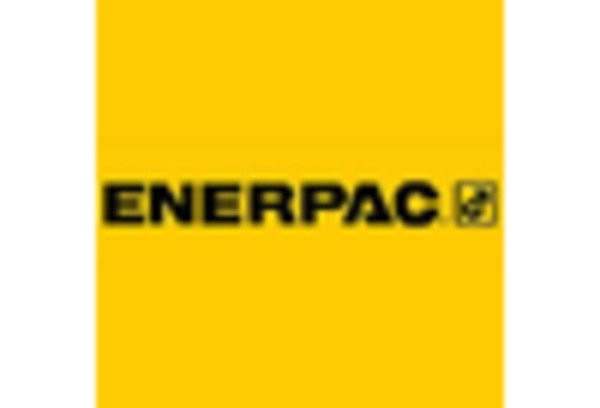
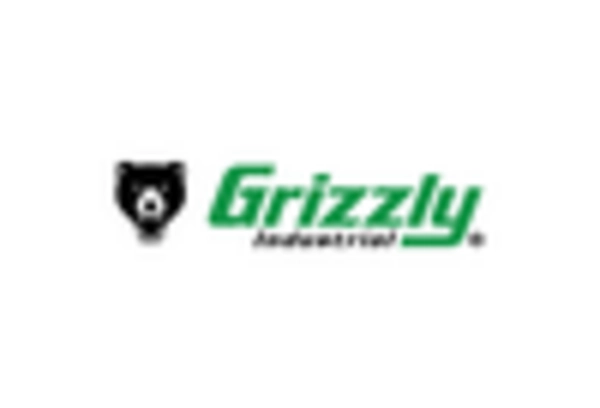
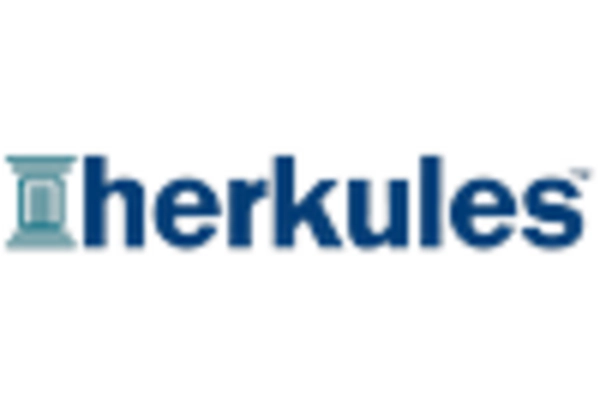
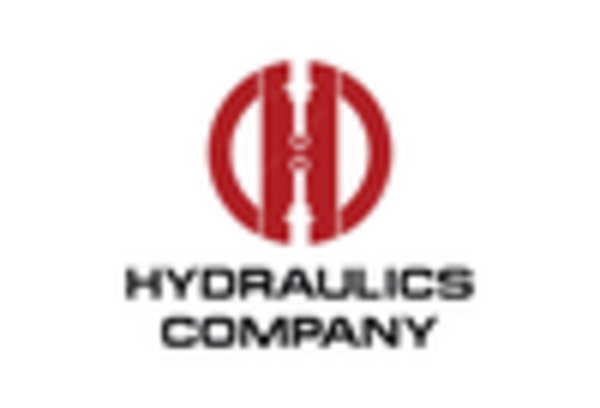









Leave a Comment